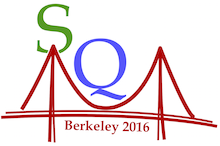Speaker
Subhash Singha
(Kent State University OH)
Description
A goal of the research at the RHIC facility is to study the QCD phase diagram. STAR has
taken Beam Energy Scan (BES) data in order to extend measurements into new regions where the baryon density is high. The beam energy dependence of the slope of directed flow $(dv_{1}/dy)$ for protons and net protons near midrapidity, recently published by STAR, points to a possible softening of the QCD equation of state. New $v_{1}$ measurements with different hadron species, having different constituent quarks, may help in disentangling the role of produced and transported quarks in heavy-ion collisions. In particular, the $\phi$-meson offers a unique advantage because its mass is similar to the proton mass, yet it is a vector meson. We will report the results of $v_{1}$ and $dv_{1}/dy$ near mid-rapidity for $\Lambda$, $\bar{\Lambda}$, $K^{\pm}$, $K_{s}^{0}$ and $\phi$ in Au+Au collisions at $\sqrt{s_{NN}}$ = 7.7, 11.5, 14.5, 19.6. 27 and 39 GeV. The $dv_{1}/dy$ of $\Lambda$ is found to be consistent with that of the proton and shows a change in sign for $\sqrt{s_{NN}} < 14.5$ GeV. Comparison with transport model calculations will be made in the talk.
| On behalf of collaboration: | STAR |
|---|
Author
Subhash Singha
(Kent State University OH)
